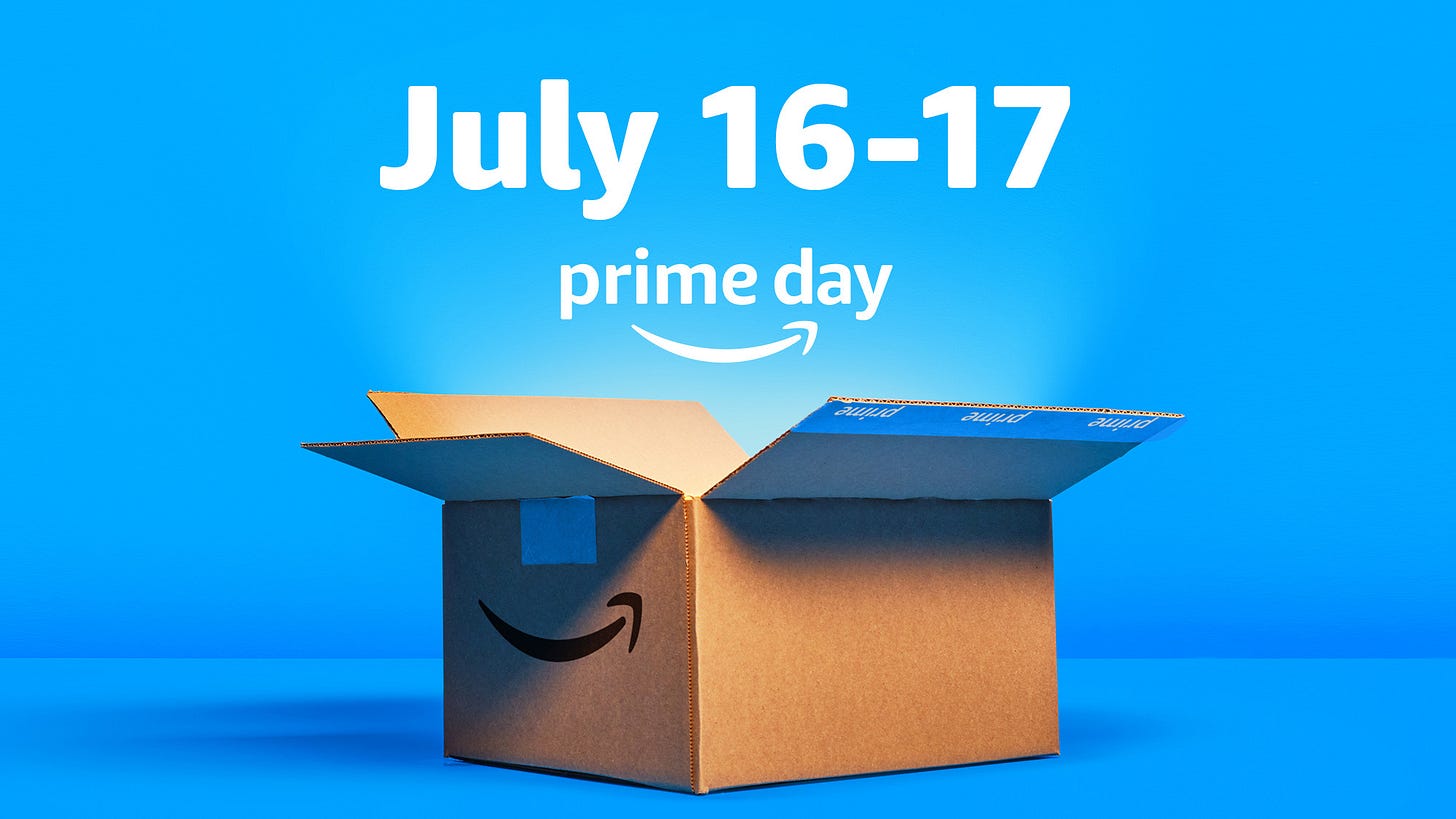Here's My Thought
Amazon Prime Day Results 2024
Prime Day has once again came and went. Without disclosing specific figures, Amazon's Prime Day 2024 set a new sales record. Prime members shopped across 35 categories, purchasing more items than ever before. Independent sellers, mainly small and medium-sized businesses, sold over 200 million items. Amazon’s AI assistant, Rufus, aided millions of shoppers.
Prime Day began on July 15, 2015, celebrating Amazon’s 20th anniversary with deals touted as bigger than Black Friday. Initially designed to promote Prime subscriptions, the event has grown significantly, with an estimated 180 million Prime members in the U.S. today.
Amazon’s approach remains consistent, offering significant discounts to drive Prime sign-ups. This year’s deals include substantial discounts on high-profile items like Peloton bikes and Sony headphones, with a focus on premium brands, particularly in beauty products.
Key Insights:
Average Order Value: $57.97 (Numerator data).
Household Spending: Average of $152, with 60% placing two or more orders.
Top-Selling Items: Amazon Fire TV Stick, premier protein shakes, Liquid I.V. packets, Glad trash bags, COSRX snail mucin serum.
Prime Membership: 88% of shoppers were Prime members, 85% for over a year.
Comparison Shopping: 54% compared prices from other retailers.
Impact on U.S. Online Retail Sales:
Total sales (excluding Amazon): $14.2 billion (Adobe Analytics), an 11% year-over-year increase.
Top Growth Categories: Electronics (61% increase), home appliances, apparel.
Mobile and Buy Now Pay Later (BNPL) Trends:
Mobile commerce: Nearly half of online purchases.
Buy Now, Pay Later: 7.6% of online orders, $1.08 billion in spending.
Global and North American Trends:
North American online sales grew 3% year-over-year (Salesforce data).
Significant discounts drove consumer spending, especially in makeup, skincare, and apparel.
Comparison with Competitors:
Amazon faces increasing competition from new and established retailers. TikTok Shop and Temu, for instance, leverage entertainment and discovery-driven shopping experiences to attract customers. Temu’s deep discounts and slower shipping model directly challenge Amazon’s fast delivery service. Meanwhile, Amazon's efforts to incorporate social shopping features like Inspire have yet to make a significant impact.
While Amazon remains the largest e-commerce player in the U.S., smaller competitors collectively pose a challenge to its dominance. New entrants like Temu, TikTok Shop, and Shein are making significant inroads, pushing Amazon to continuously innovate and adapt.
TikTok’s “Deal for You Days” offered 18% average discounts, less impactful than Amazon’s 22% average during Prime Day.
Target Circle Week - Target Circle Week ran through Saturday and offered deals across plenty of categories, with up to 50% off on toys, up to 40% off on kitchen tools and up to 30% off on bedding, bath, back-to-school supplies and clothes. Target Circle does allow for users to sign up for free - unlike Amazon prime
Walmart July Deals - Walmart offered 50% off of its membership, Walmart+, Walmart's sale ran from July 8 through July 11 which placed it out ahead of Amazon's Prime Day. The sale, dubbed Walmart Deals, is said to be the retailer's "largest savings event ever" and will offer up to 50% off thousands of items.
The Impact of Continuous Sales
If everything is on sale, is anything on sale? While Prime Day introduced a new sales event, the proliferation of similar sales throughout July has diluted its uniqueness. Consumer excitement has waned, partly due to Amazon’s multiple Prime Days and frequent smaller sales events. As a result, Prime Day sales growth has slowed, with a 6.7% increase in revenue last year compared to a staggering 78% increase in 2018.
Amazon’s frequent sales, often unmarked as Prime Day deals, further blur the lines of the event. This strategy aims to capture consistent, smaller purchases, benefiting from ongoing consumer interest.
To Wrap
July’s sales events reflect a broader trend in retail: the constant battle to capture consumer attention and spending. As Amazon and its competitors vie for market share, shoppers benefit from an array of deals, making every moment a prime time to shop. The evolution of Prime Day into a month-long sales frenzy highlights the dynamic nature of the retail landscape, where strategic timing and competitive pricing are key to success. Prime Day 2024 underscored consumer demand for value and significant discounts, setting a precedent for the upcoming holiday season.
Lightbulb idea: I would love to see someone create a marketplace platform that tracks prices on consumer goods in real time, showing current, historical and potential “sale values”. It seems like the data is there.



